My zero waste goal has given me a new appreciation for grocery shopping.
In my previous life, I often ordered from Instacart, a service that delivers groceries to your door. It was so convenient, but so wasteful! I was always stuck with extra bags, big plastic containers and free giveaways I didn’t want to eat. As Dan Mitchell noted in Civil Eats, Instacart’s delivery method also doesn’t create less trips to the grocery store and less emissions and traffic. It was just a bad environmental choice.
Now, I spend just under an hour of my day on Mondays driving, parking and perusing aisles. But the pros outweigh the cons in my opinion. I’m back in control and I’m organized. Plus, I feel like I’m doing something for my family’s future that goes beyond lunches and dinners for the following week.
Write-out a Shopping List
Before the holidays, I met with Catherine Homsey — a seasoned zero-waste practitioner. She’s a mom like me, so I felt she could give me some sound advice on how to reduce my trash without depriving my family of medicine, food, comfort and cleanliness. Her first tip: create a shopping list.
Creating a shopping list seems pretty basic. Typically, I write out the groceries I need right before I head to the store. But my list would often have omissions and I’d have to make multiple trips to the store per week. I also had never made a shopping list with the goal to reduce waste.
Catherine advised keeping paper and a pen on the refrigerator. (Scrap paper lying around the house is an excellent zero-waste choice!) As my family ran out of something or wanted to have something for the following week, they’d jot it down on the paper. We established a new rule: if it wasn’t on the list by Monday, it wasn’t going to be in the house that week.
Bring Your Supplies
Once the shopping list is complete, Catherine’s next tip was to bring all the containers and bags I’d need to purchase my groceries in bulk and reduce waste. This is a littler trickier than simply making a list, but not hard by any means. It simply requires a little planning and muscle work.
Let’s use almonds, dates and clementine oranges as examples — foods my family loves. Before I started my zero-waste challenge, I’d buy new containers filled with almonds and dried dates. I’d pull a new bag off the rolls in the produce aisle and fill it with oranges. But this is unnecessary waste. Sometimes I couldn’t even recycle the containers and bags.
Now, I have a different approach. Once I have my complete shopping list, I circle the items that need containers or bags. I bring containers and bags that I’ve collected and saved from my previous life to the grocery store. All I have to do is scoop my groceries back into their old homes.
Don’t forget to bring a reusable tote to bring all your groceries home too. In San Francisco, you pay extra for bags. But a lot of places still hand out hard-to-recycle plastic and paper bags like they’re candy.
Choose Your Grocery Store
Before beginning this zero-waste challenge I was focused on finding sustainable and organic groceries. Now add bulk to my already picky list. I’m not talking Costco bulk. I’m talking beautiful, scoop-able bulk item bins.
Rainbow Grocery is my choice in San Francisco. Not only do they have the bin basics — almonds, flour, dates and beans — they have spices, teas, honey, toiletries and the coolest peanut butter squeezing machine. The store is designed for picky shoppers like me who care about local, sustainable, organic and waste-free products.
Not every town and city is blessed with stores like Rainbow Grocery. Perhaps the idea will spread if more people demand waste-free products. But for now it’s good to just make do, and not kill yourself driving all over trying to find all the items you need in bulk.
Choose Your Products Wisely
You can’t buy everything in bulk. Milk, eggs and cheese primarily come in containers and wrappers. Reducing waste is more a matter of picking the container that’s the most recyclable or compostable. Never buy products in Styrofoam — a hard to recycle, synthetic material that breaks apart easily. Avoid milk and cream containers with small plastic caps because they can’t be recycled easily. Some cheese actually last longer if they’re not wrapped in plastic.
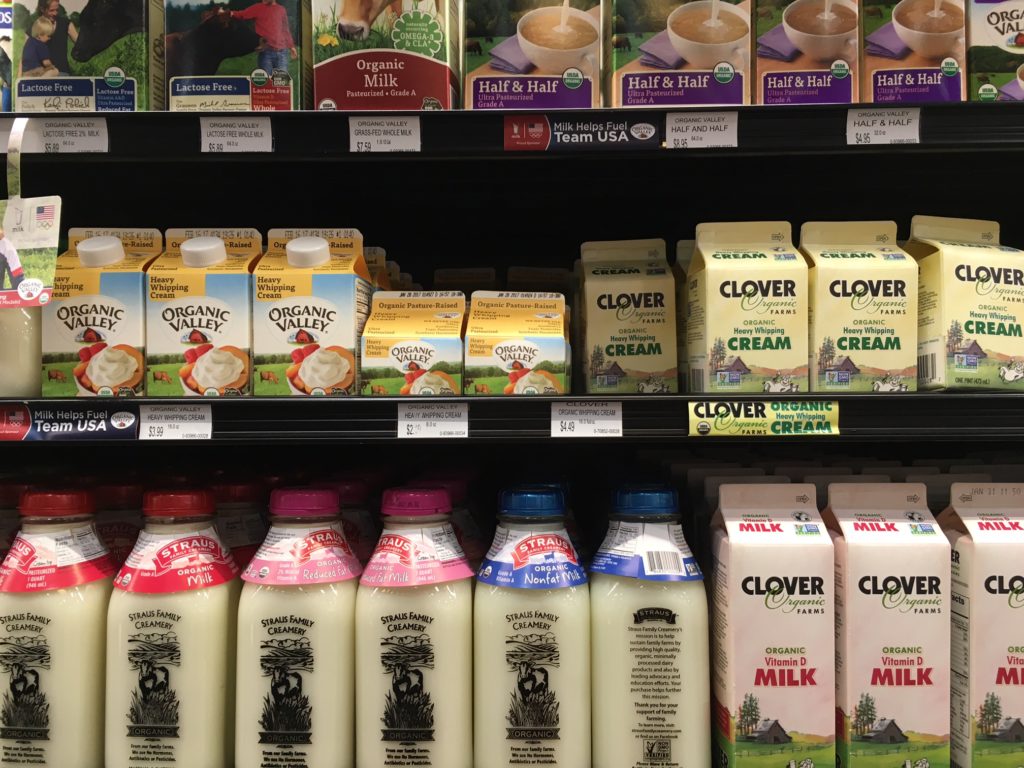 In the picture above, the Clover organic milk and cream cartons are good choices because they can be composted. The Strauss Family Creamery products are also a good choice because they can be reused. But avoid the Organic Valley heavy whipping cream because it can’t be recycled or reused.
In the picture above, the Clover organic milk and cream cartons are good choices because they can be composted. The Strauss Family Creamery products are also a good choice because they can be reused. But avoid the Organic Valley heavy whipping cream because it can’t be recycled or reused.
Check out more Zero Waste Home tips soon!

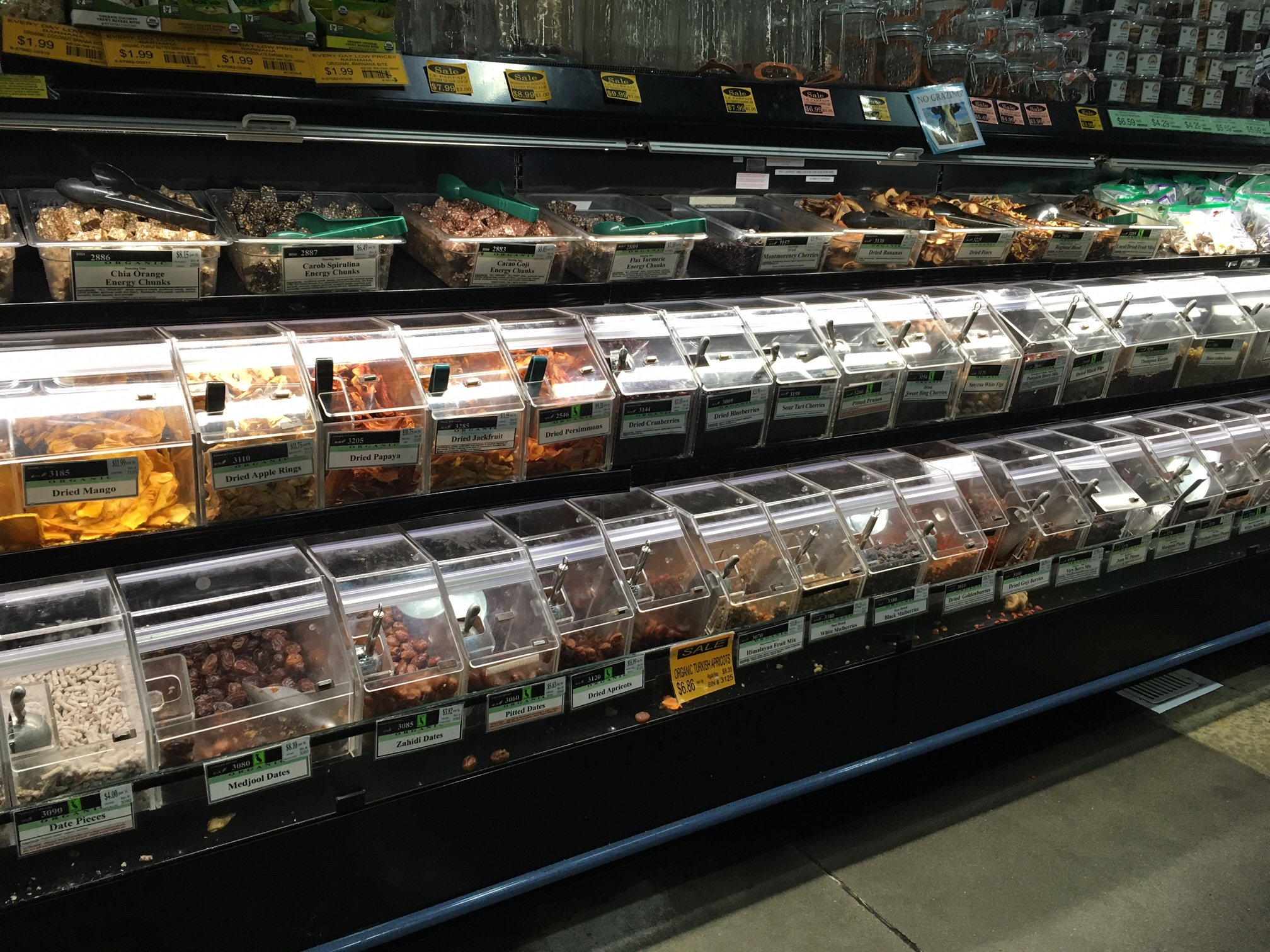
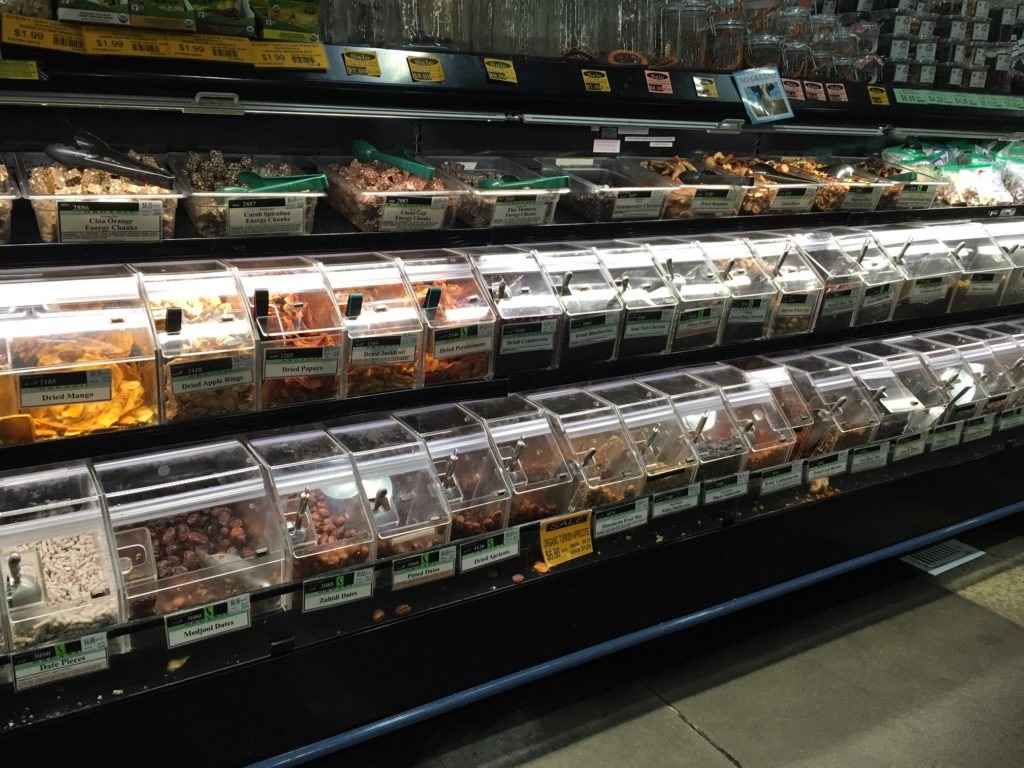
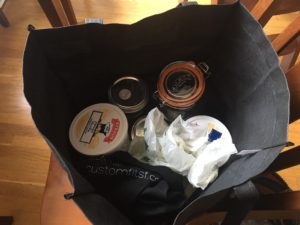
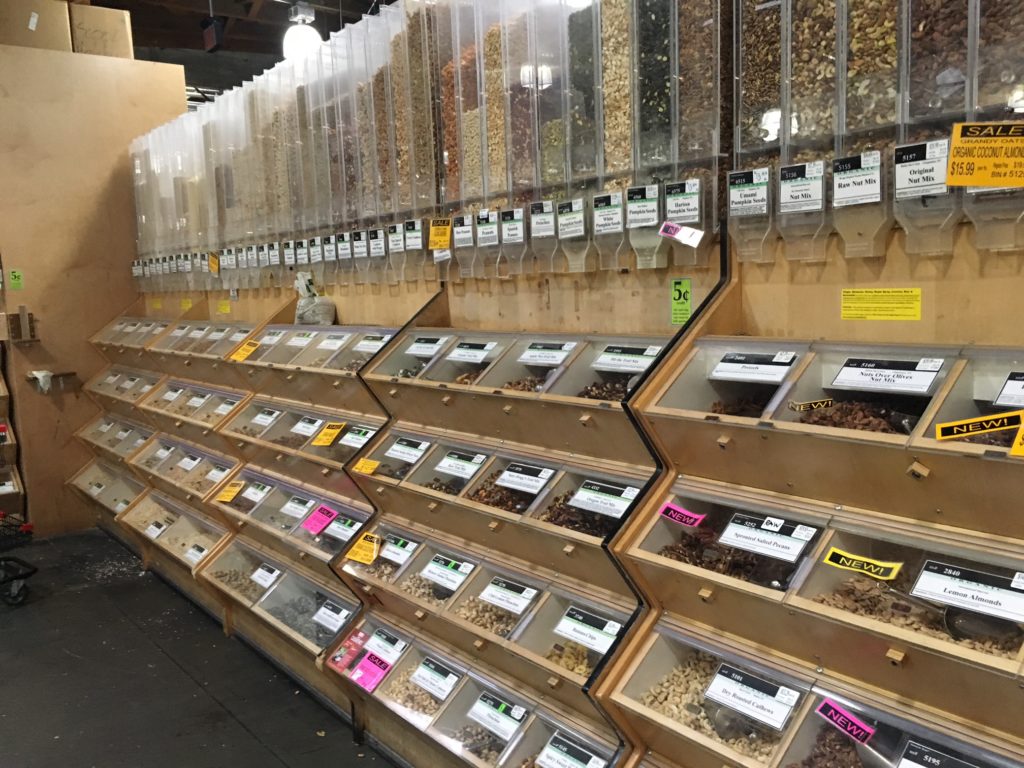
Kathryn Grace
Excellent tips. Thank you! Passing this along on my social media.
George Norton
Thank you for these tips. It’s very important to shop the right way.
George
sara
Are there any scientific studies that quantify the waste saved by bulk bin shopping with individual containers? While in the bulk bin aisle of Whole Foods I saw a staff person refilling the bin of dried cranberries from a huge vacuum-packed plastic bag. Even if I then fill up a reusable mason jar with that dried fruit, there is still a huge, thick plastic bag that doesn’t get reused. Presumably Whole Foods will recycle it, but that’s why I’m not entirely convinced that it’s more eco-friendly. Is the weight of that extra large plastic bag less than the sum of an equivalent amount of individual dried cranberry bags? I don’t know. If not, or even if less it might still be more wasteful, because at least anecdotally I usually see people using plastic produce bags in the bulk aisle, and not reusable containers brought from home. I certainly hope it’s more eco-friendly but I’d love to see some studies with data that show more conclusive evidence.
Rachel Tate
Thank you so much for this post. It is a great comprehensive list of the steps I can take towards a more sustainable home and life! I think it was a great idea for you to start with grocery shopping, which reduces the waste we bring home from the store! I am currently a student at ASU and I am studying sustainability and urban planning. One of my courses required that I create a professional website and add a blog. My first post includes the integration of sustainability in everyday life. I really appreciate your use of sustainability in everyday life. I have included my link below also. https://racheltate.weebly.com/blog